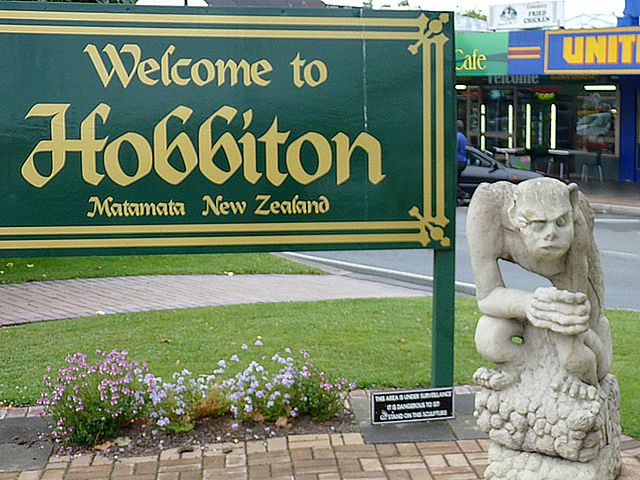The Scouring of the Shire
"The Scouring of the Shire" is the penultimate chapter of J. R. R. Tolkien's fantasy The Lord of the Rings. The Fellowship hobbits, Frodo, Sam, Merry, and Pippin, return home to the Shire to find that it is under the brutal control of ruffians and their leader "Sharkey", revealed to be the Wizard Saruman. The ruffians have despoiled the Shire, cutting down trees and destroying old houses, as well as replacing the old mill with a larger one full of machinery which pollutes the air and the water. The hobbits rouse the Shire to rebellion, lead their fellow hobbits to victory in the Battle of Bywater, and end Saruman's rule.
An ancient pedigree: Odysseus, returning home after long years of war, scours his home of the suitors of his wife Penelope, in Homer's tale. Greek skyphos, 440 BC
Tolkien related the chapter to his childhood experiences at Sarehole as it was taken over by the industrial growth of Birmingham, and the old mill there fell into disrepair.
Saruman's use of "Ruffians" to tyrannise the Shire has been compared to the Nazis' handling of dissent, here by marching people off to an internment camp in Serbia.
The export of "wagonloads of pipeweed" (here, tobacco, in a 1916 American photograph) from the Shire suggested postwar England's "gone for export" explanation of shortages.
The Lord of the Rings is an epic high fantasy novel by the English author and scholar J. R. R. Tolkien. Set in Middle-earth, the story began as a sequel to Tolkien's 1937 children's book The Hobbit, but eventually developed into a much larger work. Written in stages between 1937 and 1949, The Lord of the Rings is one of the best-selling books ever written, with over 150 million copies sold.
Beowulf's eotenas [ond] ylfe [ond] orcneas, "ogres [and] elves [and] devil-corpses" helped to inspire Tolkien to create the Orcs and Elves of Middle-earth.
Barbara Remington's cover illustrations for the Ballantine paperback version "achieved mass-cult status" on American college campuses in the 1960s. They were parodied by Michael K. Frith's cover design for the 1969 Bored of the Rings.
"Welcome to Hobbiton" sign in Matamata, New Zealand, where Peter Jackson's film version was shot





![Beowulf's eotenas [ond] ylfe [ond] orcneas, "ogres [and] elves [and] devil-corpses" helped to inspire Tolkien to create the Orcs and Elves of Middle-e](https://upload.wikimedia.org/wikipedia/commons/thumb/c/cd/Beowulf_eotenas_ylfe_orcneas.jpg/640px-Beowulf_eotenas_ylfe_orcneas.jpg)

